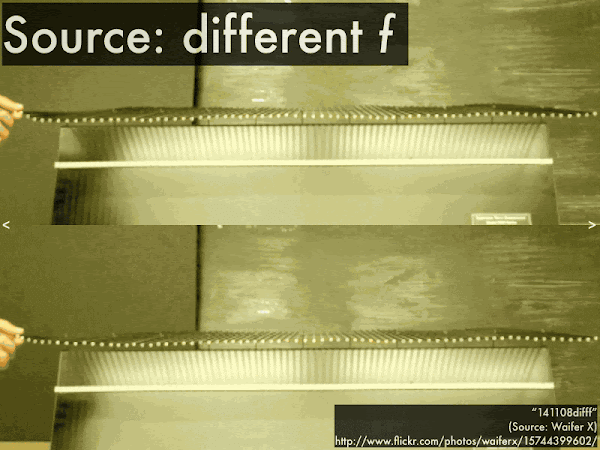Cuesta College, San Luis Obispo, CA
Students have a bi-weekly online reading assignment (hosted by SurveyMonkey.com), where they answer questions based on reading their textbook, material covered in previous lectures, opinion questions, and/or asking (anonymous) questions or making (anonymous) comments. Full credit is given for completing the online reading assignment before next week's lecture, regardless if whether their answers are correct/incorrect. Selected results/questions/comments are addressed by the instructor at the start of the following lecture.
The following questions were asked on reading textbook chapters and previewing a presentation on waves.

Selected/edited responses are given below.
Describe what you understand from the assigned textbook reading or presentation preview. Your description (2-3 sentences) should specifically demonstrate your level of understanding.
"Amplitude is the height between undisturbed position and the crest. It looks like the undisturbed position is in the middle of the wave. Mass divided by length is the linear density."
"For a transverse wave, the disturbance is sideways to the direction of the wave motion, and for a longitudinal wave, the disturbance is along the direction of the wave motion. I also learned about waves, for example, the speed of periodic waves along strings is set by the string tension and thickness, but the frequency of the wave is set by the source. The resulting spatial repeat interval is the wavelength."
"Wavelength depends on speed and frequency. Speed and frequency do not depend on wavelength. Transverse and longitudinal waves can both be periodic waves."
"Transverse waves flow up and down in one direction and longitudinal waves flow forwards-backwards in the same direction. The speed of waves weaken over time and depend on the medium of its flow."
"Again, this chapter was some nice review from what I learned in my high school physics class. I understand waves and the different types of them as well as how each wave differs in look and how to calculate various problems with given information about the waves."
"All waves are traveling disturbances and they all carry energy from one place to another. Two types of waves are longitudinal and transverse with one being where the disturbance is parallel to travel and the other is perpendicular."
Describe what you found confusing from the assigned textbook reading or presentation preview. Your description (2-3 sentences) should specifically identify the concept(s) that you do not understand.
"The difference in waves' motions with different frequencies confused me, also how the waves compare to others with the same speeds but different amplitudes. The formula applications are confusing also."
"I still don't fully understand how a sonic boom is created by a whip with its end moving fast enough to break the sound barrier."
"REVIEW REVIEW REVIEW. It makes sense conceptually, but it will really sink in with reviewing how to apply these concepts to problems. I think just learning how to apply these in the form of equations seems more difficult at home, but when in class it seems clear."
"This seems pretty straightforward... but is it?"
"I wasn't very confused on much, I have had some practice with waves."
A string of a given length has a certain linear mass density (mass/length) value. If this string is cut in half, then its linear mass density will:
decrease. ********** [10] remain constant. ********************* [21] increase. *********** [11] (Unsure/lost/guessing/help!) [0]

(Only correct responses shown.)
Faster wave speed v: there is (approximately) a tie. [64%]
Longer wavelength λ: there is (approximately) a tie. [40%]

(Only correct responses shown.)
Faster wave speed v: there is (approximately) a tie. [38%]
Longer wavelength λ: top wave (low frequency f). [93%]

(Only correct responses shown.)
Faster wave speed v: Along the right apparatus. [36%]
Longer wavelength λ: along the right apparatus. [86%]
Higher frequency f: there is (approximately) a tie. [19%]
For transverse waves on a string, classify each of these parameters are being "independent" (able to be changed without affecting other independent parameters), or "dependent" (will be changed when independent values are changed).
(Only correct responses shown.)
Amplitude A: independent. [62%]
Wave speed v: independent. [52%]
Frequency f: independent. [55%]
Wavelength λ: dependent. [81%]
Ask the instructor an anonymous question, or make a comment. Selected questions/comments may be discussed in class.
"Are the wave parameters just amplitude, speed, frequency, and wavelength?" (Yes. Although the list looks simple, the relationships between them (independent and dependent) are pretty complicated.)
"Some brief review with numbers would be good for class!" (We have time for that.)
"If we have time, I would be stoked if you could do a little run through the basics/general ideas/key points of this presentation in the next class period. Thanks!"
"Have you seen Kelly Slater's perfect wave pool? It's pretty neat." (And it's in Lemoore, CA, which basically just up Highway 41!)
No comments:
Post a Comment